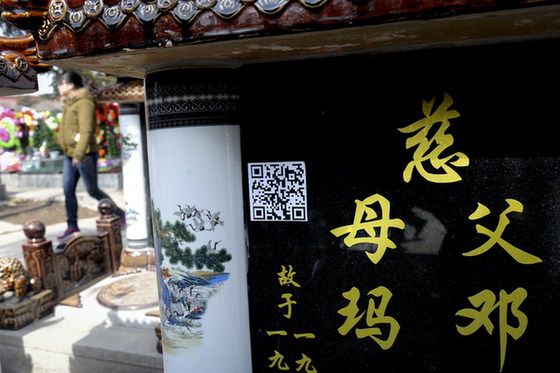Technology can bring the dead virtually to life
 |
|
A QR code on a gravestone in Shenyang, Liaoning province, for smartphone users to scan so they can access information about the deceased's life. Li Zhenyong / for China Daily |
While gravestones have not changed much in hundreds of years, modern technology is providing a "voice from the grave" to allow people to access information on the deceased.
On Tomb-Sweeping Day, or Qingming, which falls in early April, in some cemeteries smartphone users will be able to scan the QR (quick response) code on some gravestones to access a webpage that provides information about the deceased, including stories, pictures, videos and guest books.
"A tombstone with a QR code records memories of love," Hu Jianbo, founder of Shanghai Muoyi Technology Co, told China Daily. The firm specializes in QR codes for tombstones.
All gravestones have basic information, a person's name, year of birth and death. But QR codes, discreetly placed behind a small piece of glass, allow people to find out more about the deceased, including photographs as well as favorite stories and songs, Hu said.
"People who visit the website through QR codes can also express their sympathy to the family via an online condolence book," Hu added.
Since the company started operations in December 2012, more than 160,000 QR code-enabled tombstones have been sold across the country, mainly in the provinces of Fujian, Jiangsu, Zhejiang as well as Shanghai.
It costs 399 yuan ($65) to implant a code on a gravestone, according to Hu.
Chen Xiaoyu, a 32-year-old engineer in Shenyang, Liaoning province, heard of QR code-enabled tombstones recently and is interested in the concept.
"My grandfather passed away five years ago and he had an incredible life, which should be remembered and this technology makes it possible," Chen said.
But widespread acceptance of its use is still some way off.
















